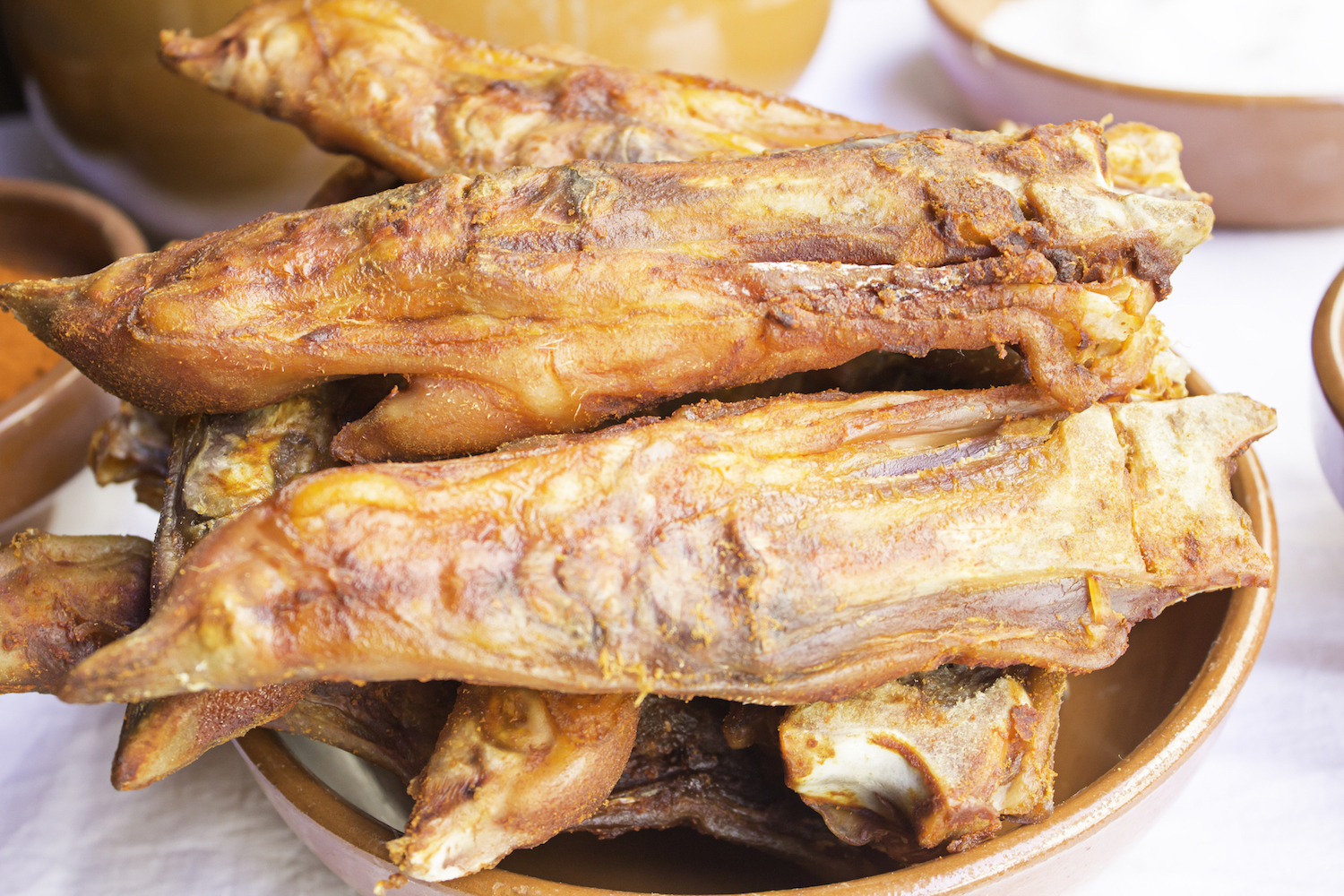
Cooking Pigs’ Feet
When people butchered a pig in the 1800s, no part of the animal went to waste.
I’ve never seen fresh pigs’ feet in the grocery store, but I have seen pickled pigs’ feet in glass jars.
INFORMATION BELOW FROM 1800s COOKBOOKS
FRIED PIGS’ FEET
Thoroughly burn all the hairs off with a poker heated to a white heat. Then scald the feet and wipe them dry. Put them over the fire to boil in cold water, with two ounces each of carrot and onion, the latter stuck with six cloves. Also add two tablespoons salt, one-fourth ounce parsley made into a bouquet with three bay leaves and a sprig of thyme. Boil slowly four hours or more until you can easily remove the bones. Split the feet in two pieces and take out all the large bones.
Have ready some sifted crumbs of cracker or dry bread, a little milk, or an egg beaten with a teaspoon of water. Dry the pieces of meat on a clean towel, roll them first in the crumbs, then dip them in the milk or egg, and roll them again in the crumbs. Fry them in smoking hot lard, which you must afterwards strain and save to use again. Lay them neatly on a hot dish. They will make an appetizing and nourishing meal.
BOILED PIGS’ FEET
Take two dozen pigs’ feet, a good deal of water, and a tablespoon of salt. Put the feet into a large pot and cover with lukewarm water, adding the salt. Simmer slowly until thoroughly done, which will take four or five hours. The bones must be loose, but the feet must not be allowed to remain in the water until they are ready to fall out.
STEWED PIGS’ FEET
Take the quantity of feet you wish to serve, and put them into a saucepan with a little hot water. Cover and steam until perfectly soft, then put in enough fresh cream to cover. Let it boil up once, rub a small quantity of butter and flour together, and add to the feet. Boil up once more, season with salt and pepper, and put in a little sweet marjory [marjoram] to your taste.
BROILED PIGS’ FEET
Split six feet in two, lengthwise, and soak them in tepid water for ten minutes. Then envelop each in a piece of linen well tied or sewed. Place them in a kettle or stew-pan with four small onions, four sprigs of parsley, two of thyme, two of sweet basil, two bay-leaves, two cloves of garlic, two cloves, two small carrots cut in pieces, salt, pepper, and half a pint of white wine. Cover with cold water and simmer about six hours. Skim them properly, fill with boiling water so as to have them covered all the time, and take from the fire when cooked. When nearly cool, take the feet from the kettle, untie them, throw away the linen, and let them cool. Dip each in melted butter or in sweet-oil,* roll in bread-crumbs, and place on a gridiron and on a good fire. Serve them as they are when properly broiled.
* sweet oil – olive oil
STUFFED PIGS’ FEET
Prepare the feet and cook them as above. When perfectly cold, remove the long bone of each half and fill the place with sausage-meat. Dip each in melted butter and yolk of egg, mixed and seasoned with salt and pepper, roll in bread-crumbs, and broil. While they are broiling, baste them with melted butter. Serve as they are, or with meat-jelly, or gravy.
PICKLED PIGS’ FEET
Take twelve pig feet, scrape and wash them clean and put them into a saucepan with enough hot (not boiling) water to cover them. When partly done, salt them. It requires four to five hours to boil them soft. Pack them in a stone crock and pour over them spiced vinegar made hot. They will be ready to use in a day or two.
If you wish them for breakfast, split them, make a batter of two eggs, a cup of milk, salt, one teaspoon butter, and with flour enough to make a thick batter. Dip each piece in this and fry in hot lard. Good eaten cold or warm.
JELLIED PIGS’ FEET
Take two pounds of pickled pig feet you make yourself or as they come from the market. Boil in water to cover, seasoning with salt, pepper, celery seed, and a little vinegar. Boil until the meat slips from the bones.
Remove the meat, cut it into small pieces, and reduce the liquid by rapid boiling to a cupful. Put the meat into a mold, pour the liquid over, and set away to cool. Serve with potato salad.
Image from Deposit Photos
=================================================
Have You Ever Eaten Pigs’ Feet? Please Leave a Comment Below.
=================================================
You may not want to cook the “Rest of the Animal” yourself, but this is an interesting cookbook and would make a great gift for a cooking enthusiast.

We’re all familiar with the prime cuts— beef tenderloin, rack of lamb, and pork chops. But what about kidneys, tripe, liver, belly, cheek, and shank? Odd Bits will not only restore our taste for these cuts, but will remove the mystery of cooking with offal, so food lovers can approach them as confidently as they would a steak.
Available as an ebook in a variety of online stores.
=================================================
 VINTAGE COOKING from the 1800s ~ PORK
VINTAGE COOKING from the 1800s ~ PORK
by Angela Johnson
Journey back into the 1800s and discover how people prepared, cooked, and preserved pork, making use of the whole animal. With no electrical refrigeration or modern conveniences, it was a time of thriftiness, resourcefulness, and “making do.”
Recipes Include Pig Feet Relish, German Roast Pork, Boiled Bacon and Cabbages, Bologna Sausage, Pork Apple Pot-Pie, Pork and Peas Pudding, Pork Stew, Baked Pork and Beans, Italian Pork and more.
Available from these online Retailers:
Amazon, Kobo, Apple, Barnes&Noble, Scribd, 24 Symbols, Playster, Angues & Robertson, Mondadori Store, and more.
Also available as Regular Print and Large Print on Amazon.
=================================================
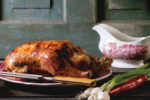
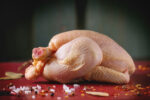
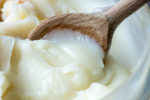
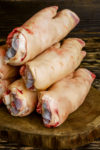
9 thoughts on “Cooking Pigs’ Feet”
I love them! Pickled or as my Italian Mother made them, in a red tomato sauce. Sometimes I make just the pig skin in tomato which I make to this day.
When I was a child my Mom would cook them in her spaghetti sauce, and I still do. You boil them in water for 3 to 4 hours until they are soft and a knife slides through them. Then she would cook them in her sauce for about 20 minutes longer. I make these often at least when I can get them in the store. Most stores do not carry pigs feet.
I have seen pigs feet in the meat section and also pickled pigs feet in the canned food section (in jars). I don’t know why because I am a meat eater, but the looks of pigs feet turns me off.
I grew up eating pigs feet still eat them to this day I love them matter of fact I’m cooking some now they are delicious.
I haven’t eaten them but I would if they were in some dish where I couldn’t see the shape of the feet. I’ve seen fresh ones in the meat department and pickled pigs feet in jars, and it bothers me for some reason. Yet I’ll eat chicken legs and wings….
We used to call them ‘pig’s trotters’ and we had them occasionally when I was a child. I remember they didn’t taste particularly of anything and they were always a big sticky and gooey – or maybe that was just the way my mother cooked them!
I guess when we’re kids, we eat what our mothers cook. Mine didn’t cook pigs’ feet, but she did cook beef liver – Yuk! Fortunately, she didn’t cook it often.
Yes, I ate one pickled pigs foot, one time, and only once, when someone in the family told me I wouldn’t. So of course, I had to show that I would. I never ate them again, but it actually didn’t taste too bad, probably because of the vinegar and salt. Never felt the need to try them again! LOL!
You’re brave. I’d probably eat one, too, if someone had a jar, but I wouldn’t buy them myself. Fortunately, I don’t know anyone who eats them.